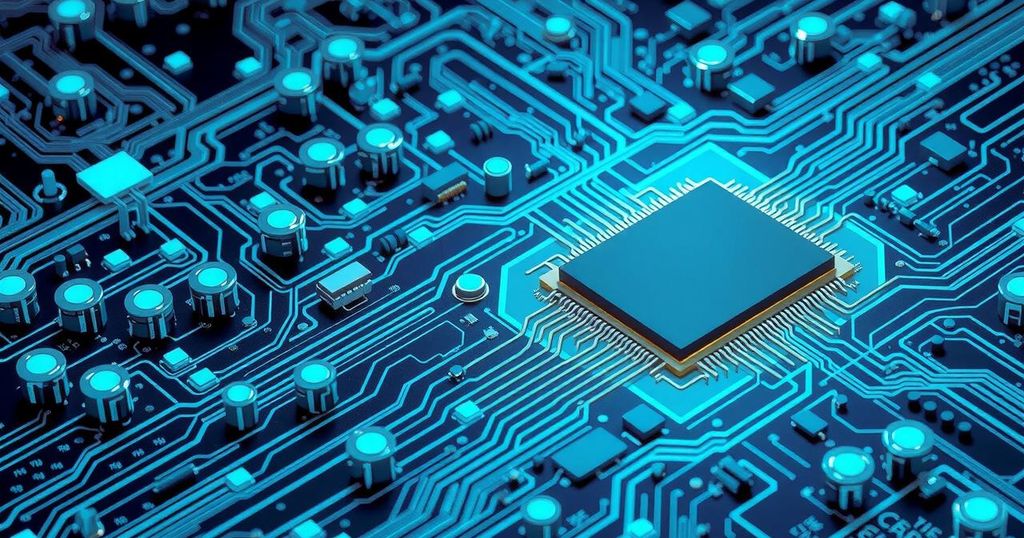China’s Semiconductor Industry: Advancements and Strategic Proposals
The article highlights recent advancements in China’s semiconductor industry, including China’s EUV lithography breakthroughs, a proposal for anonymous semiconductor purchases, and strategic shifts at Intel. Key developments involve enhancing domestic production capabilities, overcoming US export restrictions, and positioning within global competition.
This article summarizes key developments in China’s semiconductor industry as reported in DIGITIMES Asia from March 10 to March 15. Notable advancements include China’s progress in extreme ultraviolet (EUV) lithography and a proposal by Chinese lawmakers aimed at circumventing US export controls.
China’s foray into EUV lithography, spearheaded by Huawei and SMIC, is significant as they reportedly developed a domestic EUV system utilizing laser-induced discharge plasma (LDP) technology. This system is currently being tested, with plans for trial production in the third quarter of 2025 and mass production by 2026. The LDP method could potentially prove more efficient than competitors, allowing China to reduce reliance on foreign technology despite existing US export restrictions.
A Chinese lawmaker has proposed allowing blacklisted firms to make anonymous foreign semiconductor purchases to bypass US export controls. Presented at the National People’s Congress by engineer Wen-Hui Guan, the proposal seeks to replace public tenders with private transactions, relieving suppliers from US scrutiny. While Chinese firms have already been using intermediaries for such acquisitions, the proposal remains subject to government review.
Naura Technology Group has been expanding its semiconductor equipment portfolio, focusing on developing domestic capabilities to fill the current gap in advanced lithography machines. This effort is vital for achieving self-sufficiency in chip production. Although progress in lithography is slow, Naura’s investments, including a partnership with Kingsemi, indicate a long-term strategy to strengthen China’s semiconductor supply chain.
The article also touches on Intel’s strategic movements under the leadership of new CEO Lip-Bu Tan. Speculations suggest a potential merger of Intel Foundry Services with GlobalFoundries to enhance competition against TSMC and solidify US semiconductor capabilities amidst geopolitical tensions. Concerns regarding antitrust implications further underscore the complexity of this strategic direction.
Kioxia anticipates an overall increase in NAND shipments throughout 2025 but warns of a potential supply shortage in the latter half due to escalated demand, particularly from AI servers. Kioxia aims to align production with market demands while advancing its NAND technology roadmap to support AI and enterprise storage needs.
The unveiling of Intel’s Panther Lake processor, showcasing advancements in AI compute power and manufactured through the cutting-edge 18A process, is pivotal for its competitiveness against TSMC. With significant investment support through the CHIPS Act, Intel seeks to strengthen its foothold in both the consumer and foundry markets.
Despite US-China tensions, Naura’s rise to sixth place among global semiconductor equipment providers illustrates its growing prominence as Chinese firms increasingly rely on domestic technology to alleviate production constraints caused by international sanctions. These developments indicate a concerted push towards enhancing self-sufficiency within China’s semiconductor landscape.
In conclusion, China’s semiconductor industry is making significant strides in technology development and strategic policy proposals aimed at overcoming external obstacles. From advancements in EUV lithography and policy proposals for semiconductor procurement to the elevation of domestic equipment manufacturers like Naura, these developments signify a shift towards self-sufficiency. Concurrently, Intel’s strategic maneuvers highlight the competitive landscape of the semiconductor industry amidst rising geopolitical tensions. The ongoing evolution showcases the critical importance of semiconductor technology for each country’s economic future.
Original Source: www.digitimes.com




Post Comment